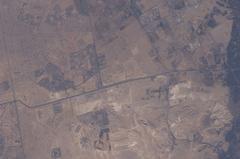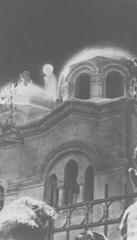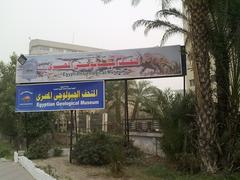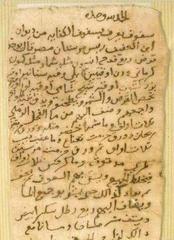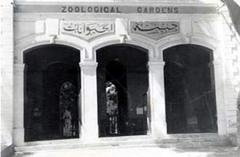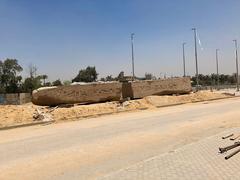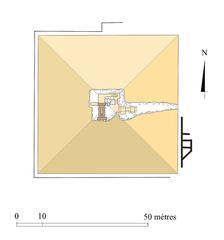Saints Sergius and Bacchus Church: Visiting Hours, Tickets, and Historical Significance in Giza Governorate, Egypt
Date: 14/06/2025
Introduction
The Church of Saints Sergius and Bacchus—widely known as Abu Serga—is one of Egypt’s most ancient and spiritually important Christian monuments. Situated in the heart of Old Cairo’s Coptic Quarter, the church dates back to the late 4th or early 5th century AD. It is celebrated for its rich architectural legacy, deep religious associations, and enduring role as a living center of worship and community. According to Coptic tradition, the church’s crypt sheltered the Holy Family—Mary, Joseph, and the infant Jesus—during their flight into Egypt. Over centuries, Abu Serga has become a revered pilgrimage site and a symbol of Egypt’s pluralistic heritage (egymonuments.gov.eg; egyptdaytrips.com; Encounter Travel; egypttimetravel.com).
Historical Overview
Origins and Early Significance
Abu Serga stands atop the ruins of an ancient Roman fort in Old Cairo (Fustat), exemplifying the enduring legacy of early Christianity during a period of Roman rule. It is dedicated to Saints Sergius and Bacchus—Roman soldiers and Christian martyrs whose steadfast faith is commemorated annually on October 7. The church’s founding as a memorial to these martyrs embodies the resilience of the early Christian community (arabmls.org; egypttourpackages.com).
Connection to the Holy Family
Central to Abu Serga’s spiritual importance is its association with the Holy Family’s flight into Egypt. Coptic tradition holds that the crypt beneath the sanctuary gave refuge to Mary, Joseph, and Jesus. This makes the church a focal point for both Coptic pilgrims and international visitors. The crypt, about 10 meters below the sanctuary, is a site of special veneration and annual religious observances (egyptdaytrips.com; egymonuments.gov.eg).
Architectural Evolution
Abu Serga features a basilica layout with a central nave and two aisles, divided by twelve columns (symbolizing the apostles), and showcases a harmonious blend of Roman, Byzantine, and Coptic architectural elements. Notable features include a painted dome, a bell tower, an inlaid ivory and wood templon (iconostasis), and frescoes depicting saints and biblical scenes. The church has undergone several restorations, most recently a significant project completed in 2010 (youregypttours.com; arabmls.org).
Historical and Political Role
Throughout its history, the church has served as both a spiritual and communal stronghold, sheltering Copts during the Arab conquest and hosting significant events like the coronation of the Fatimid caliph al-Mu’izz li-Din Allah. Its ongoing use reflects its central place in Coptic identity and Egypt’s religious landscape (cairotoptours.com; amonratours.com).
Religious and Cultural Importance
Coptic Worship and Festivities
Abu Serga is a vibrant center for Coptic liturgy, feast day celebrations, and religious festivals such as the Feast of the Holy Family and Coptic Christmas. The church’s rituals, hymns, and prayers are conducted in both Coptic and Arabic, nurturing a living tradition that connects the present with Egypt’s early Christian past (egyptdaytours.com).
Pilgrimage Destination
The church’s crypt attracts pilgrims year-round, especially during feast days. Pilgrims venerate relics, icons, and sacred art, and participate in processions and liturgies that reinforce communal and spiritual bonds.
Artistic Heritage
Inside, Abu Serga is adorned with frescoes, ancient icons, and intricately carved wooden screens. The sanctuary features a rich iconostasis and a main stone altar beneath a semi-circular apse. The crypt, though modest, is a place of profound reflection. Many of the church’s original artworks are now preserved in the Coptic Museum.
Interfaith Significance
Located in the multicultural Coptic Quarter, Abu Serga stands alongside synagogues and mosques, embodying religious coexistence and dialogue within Cairo. Its history and architecture attract not only Christians but also tourists and scholars of diverse backgrounds.
Architectural Features
- Basilica Layout: Central nave with two side aisles, separated by twelve columns.
- Materials: Columns repurposed from Roman and Pharaonic structures; stone walls; wooden roofs.
- Sanctuary and Iconostasis: Decorated wooden screens, geometric motifs, and religious icons.
- Crypt: Approximately 10 meters below the sanctuary, accessible by stairs (may be flooded during high Nile levels).
- Frescoes: Depicting saints, apostles, and the Virgin Mary.
Visiting Saints Sergius and Bacchus Church
Visiting Hours
- Standard Hours: Daily from 9:00 AM to 5:00 PM.
- Festivals: Extended hours may apply during major religious celebrations.
- Note: Hours can vary during holidays or special liturgical events—always verify with official sources.
Tickets and Entry
- General Entry: Free for all visitors; donations are welcomed to support maintenance.
- Guided Tours: Fees may apply for guided or group tours.
How to Get There
- Location: Coptic Quarter, Old Cairo, near Mar Girgis metro station.
- Transport: Easily accessed by metro, taxi, or ride-sharing services. Walking is recommended for the final approach due to narrow streets.
Accessibility
- General: The site is pedestrian-friendly but features uneven surfaces and steps, particularly leading to the crypt.
- Mobility: The crypt is not wheelchair accessible; assistance may be arranged on request.
Dress Code and Etiquette
- Dress: Modest clothing covering shoulders and knees is required.
- Conduct: Maintain silence and reverence, especially during services. Discreet photography is allowed but avoid disturbing worshippers.
Safety
- Security: The Coptic Quarter is generally safe with visible security. Standard precautions are advised.
Facilities
- Amenities: Nearby cafés and shops; limited facilities within the church itself.
Nearby Attractions
- The Hanging Church
- Ben Ezra Synagogue
- The Coptic Museum
- Church of St. Barbara
These sites are all within walking distance, making Old Cairo a rich area for extended exploration.
Cultural Insights
- Community Life: The church supports social and charitable initiatives and is active in interfaith dialogue.
- Festivals: Annual feast days and processions are significant cultural events, attracting pilgrims and visitors.
Summary Table: Key Visitor Information
| Aspect | Details |
|---|---|
| Location | Coptic Quarter, Old Cairo, near Mar Girgis metro station |
| Visiting Hours | Daily, 9:00 AM – 5:00 PM (verify for special events) |
| Entry Fee | Free (donations welcome) |
| Dress Code | Modest attire required |
| Accessibility | Pedestrian-friendly; steps to crypt; limited wheelchair access |
| Facilities | Basic amenities nearby |
| Safety | Generally safe; standard precautions |
| Language | Arabic; English-speaking guides available |
| Photography | Allowed (discreet, no flash/tripods) |
| Nearby Attractions | Coptic Museum, Hanging Church, Ben Ezra Synagogue, St. Barbara Church |
Frequently Asked Questions (FAQ)
Q: What are the visiting hours for Saints Sergius and Bacchus Church?
A: Typically 9:00 AM to 5:00 PM daily; confirm during religious holidays.
Q: Is there an entry fee?
A: No; entry is free. Donations are appreciated.
Q: Is the church accessible for visitors with disabilities?
A: The main nave is accessible, but the crypt has stairs and limited access.
Q: Are guided tours available?
A: Yes, through many local operators and as part of Coptic Cairo itineraries.
Q: What is the dress code?
A: Modest attire covering shoulders and knees is required.
Q: Can I take photographs?
A: Photography is allowed in most areas; avoid flash and photographing worshippers without permission.
Conclusion
Saints Sergius and Bacchus Church (Abu Serga) is a cornerstone of Egypt’s Christian legacy and an essential destination in Cairo’s historical landscape. Its deep spiritual associations, unique architecture, and role in Coptic tradition offer a meaningful experience for pilgrims, history enthusiasts, and cultural travelers alike. Plan your visit by confirming current visiting hours, considering a guided tour, and exploring nearby Coptic landmarks for a comprehensive journey through Egypt’s enduring religious heritage.
For more information, visit:
For virtual tours, audio guides, and up-to-date tips, download the Audiala app and follow us on social media.

